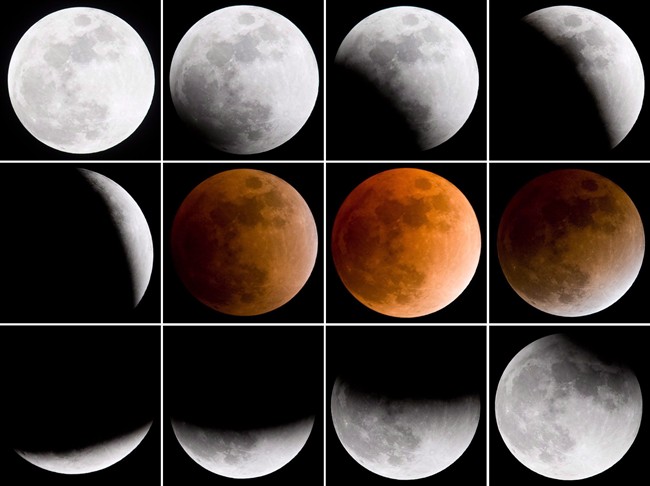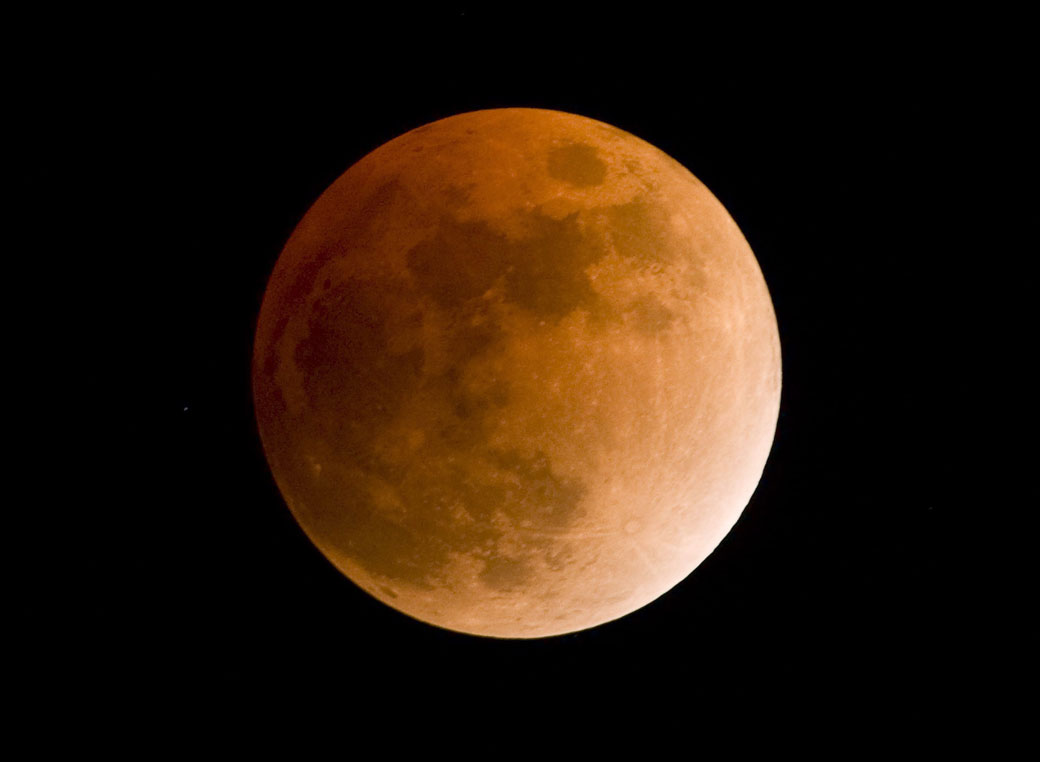TORONTO – By now you’ve probably heard the total lunar eclipse that will take place on April 15 referred to as a blood moon, or the first of a tetrad of eclipses. What does this mean?

In astronomy, a moon is a moon. Astronomers don’t believe in “super moons,” or “blood moons.” There are only different phases; for example, a full moon, a new moon, the first quarter, and so on.
READ MORE: Where and when to see Monday’s lunar eclipse
But what about the Harvest Moon, you may wonder. Well, First Nations people first named full moons throughout the months to mark the passing of seasons; later, farmers used the moon to mark the times of planting and harvest.
They did not, however, give us the term “blood moon.” That name likely stems from two things: The colour of the moon during a total lunar eclipse and religious beliefs, in particular concerning the coming tetrad.
A tetrad is when there are four total lunar eclipses in a row, with no partial lunar eclipses in between. Though rare, they’re not as uncommon as some may lead you to believe : the last one was in 2003. Monday’s total lunar eclipse begins a tetrad that will take place from 2014 to 2015. During a 5000-year period from 1999-3000 there will be 142 tetrads.
Earth’s orbit is changing (this happens over thousands of years and at a very slow pace). Because of this, the occurrence of tetrads aren’t evenly spread out: From 1582 to 1908 there were no tetrads, yet from 1909 to 2156, there will be 17. During this century alone, there will be 8.
WATCH: Understanding lunar eclipses
During a total eclipse, sunlight is scattered through the Earth’s atmosphere. For the same reason we see a blue sky, the light from the spectrum scatters, leaving just red. Imagine if you will, standing on the moon, looking at Earth during the eclipse. There would be a ring around Earth, as the planet blocks out the sun, allowing just the refracted light up through our atmosphere. We’d be looking at sunrises and sunsets right around the planet. That reddish light from these sunrises and sunsets are then sent back out toward the moon during the eclipse.
Just how red that light is depends on how much dust, ash, and particulate matter is in our atmosphere. Following the eruption of Mount Pinatubo in the Philippines, for example, the eclipse on December 9, 1992, was the darkest in decades. So the moon always turns a reddish colour. This eclipse is no different than any other before or after it.
The tetrad
Now, put the red moon together with the tetrad and you have many who believe it is of particular religious significance.
This total lunar eclipse falls during the Jewish holiday of Passover, as does the third, on April 4, 2015. The lunar eclipse on October 8, 2014, falls during Sukkot as does the fourth, on September 28, 2015.

There are also several references to “blood” moons in the Bible. The Book of Joel 2:31, reads, “The sun shall be turned into darkness, and the moon into blood, before the great and the terrible day of the Lord come.” Also, there is the Book of Revelation, 6:12: “And I beheld when he had opened the sixth seal, and, lo, there was a great earthquake; and the sun became black as sackcloth of hair, and the moon became as blood.”
So for a series of events such as four lunar eclipses in a row, there are many who believe it is a sign of Second Coming of Jesus Christ.
A recent book entitled Four Blood Moons: Something Is About to Change, by Pastor John Hagee, might also be a reason for the increase interest in the term “blood moon” and tetrad.
But from a scientific point of view, this total lunar eclipse, and the three that come after it, are due to the mechanics of our solar system and the universe as a whole.


Comments